Recent Posts
- Home
- Latin Touch
- Ragin’ Cajun La Caja China Part One: Cochon de Lait
Ragin’ Cajun La Caja China Part One: Cochon de Lait
Posted by on
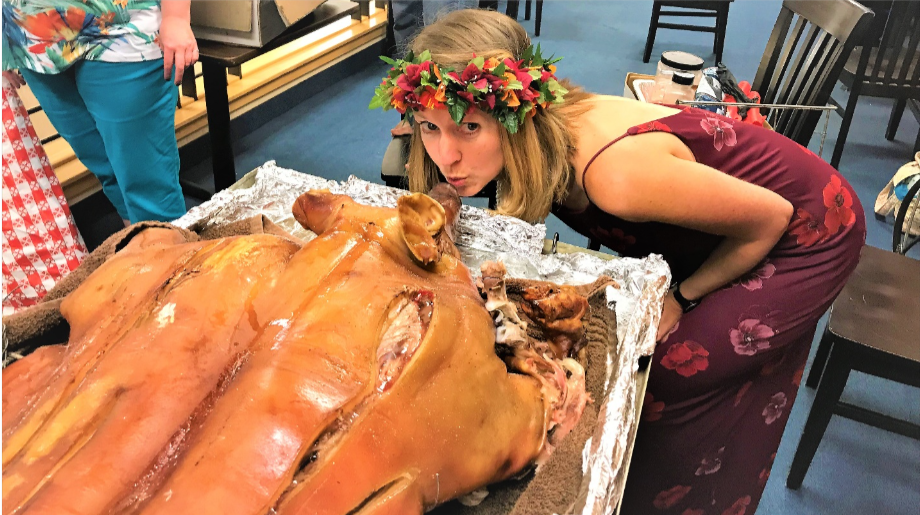
Ragin’ Cajun La Caja China
Part One: Cochon de Lait
~Chef Perry Perkins~
“Pork and chicken grease, the aromatics of choice for the Cajun.”
― Ken Wheaton
Cochon De Lait is a French term that translates literally to "Pig in Milk."
Traditionally, this most Cajun of dishes uses a suckling (less than six-week old) pig. The fine folk of southwest Louisiana love their pork, but Cochon De Lait is spoken of with a special kind of reverence. It’s also a great excuse to throw a party, play some music, and hang out with friends and family!
We’re going to use a bit bigger pig, which won’t quite match the subtle flavor and texture of a sucking, but rubbed with white wine and classic Cajun seasons, is still well North of sublime.
Cajuns will often tell you that the cracklins (the Southern equivalent of Latino Chicharrones) from the cooked skin of the pig is the best bite at the party, and they’re crazy easy to make!
(per 20/lbs of pig)
- ¼ cup kosher salt
- ¼ cup celery salt
- ¼ cup smoked paprika
- ¼ cup garlic powder
- 2 tablespoons cayenne pepper
- 1 tablespoon ground black pepper
- 2 cups white wine
- ½ cup unsalted butter, melted
- ¼ cup hot sauce, such as Slap Ya Mama
Score and oil the pig on all sides. By scoring before roasting, as opposed to the more traditional La Caja China method, more of the fat is released from the skin, making it easier to make your cracklins later.
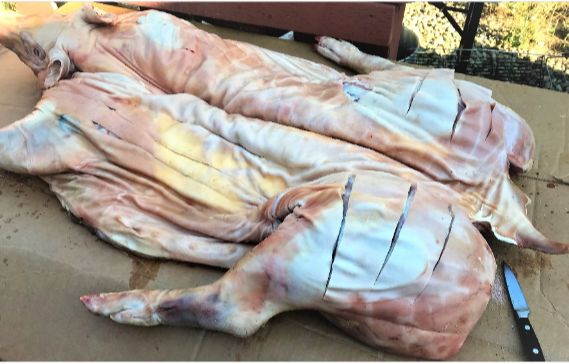
For the rub:
Combine salts, paprika, garlic powder, cayenne, and pepper. Rub into pig on all sides until well coated, marinate overnight.
For the baste:
In a medium bowl, combine wine, butter, and hot sauce. Baste your pig prior to roasting, after flipping, and after removing the skin.
Smoke with oak mixed with pecan, 50/50
Cook Time: 9-10 hours for a 50 - 75 pound pig
Instructions:
The day you plan to cook, remove the pig from the cooler and let it warm up to room temperature.
Place 3-4 (depending on size) disposable drip pans in the bottom of the box, and add a couple of cups of water, apple juice, or beer to each pan.
Place the pig between the racks, belly up, and use the 4 S-Hooks to secure the two racks together,
near the corners.
Insert the probe from a wired thermometer into the thickest part of the pig's shoulder, and run wire
under the rail of the top frame.
Light your smoker unit (pictured with the A-Maze-N Smoker), and place it on top of the pig rack, over a
small piece of foil to protect the bottom from moisture, removing both end rails for ventilation.
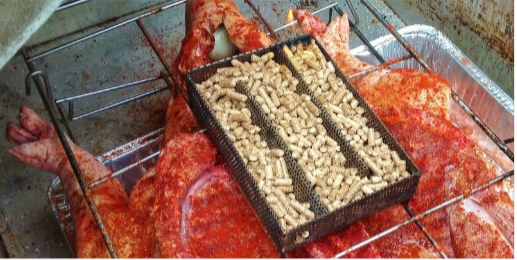
Close up the box with the ash pan, and charcoal grid, to cover.
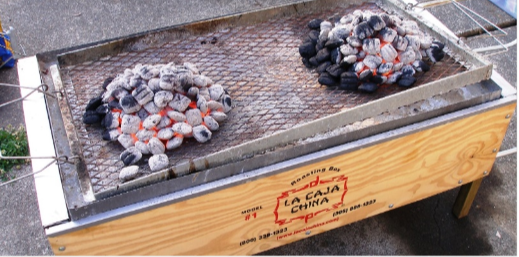
Cover box with the ash pan and charcoal grid. Add 14 lbs. of charcoal for a 70# box or 16lbs of charcoal a 100# box, in two equal piles and light. Once lit (20-25 minutes) spread the charcoal evenly over the charcoal grid.
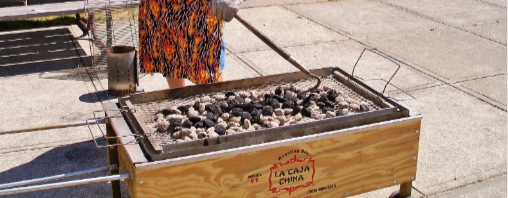
Add an additional 8 pounds of charcoal every hour until you reach 180 F on the meat thermometer
(7-8 hours) keeping the box temp between 225F and 250F.
IMPORTANT: DON’T PEEK! Only lift the charcoal lid as instructed.
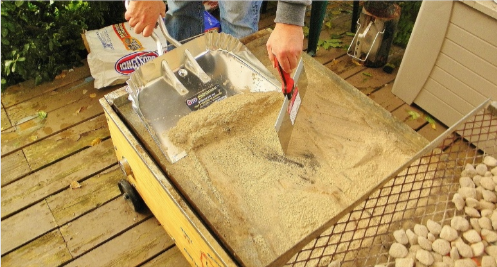
Once you reach 195 F on your thermometer, open the box and remove the smoker. Flip the pig, skin-side up, and baste.
Cover the box again with the ash pan and the charcoal grid; do not add more charcoal at this time.
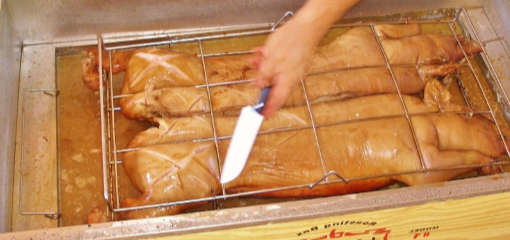
After 30 minutes, take a peek by lifting the charcoal pan by one end only. You will continue doing this every 10 minutes until the skin is crispy to your liking. (If you plan to make cracklins, you can skip this step.)
In Part Two, we’ll take a look at how to make those lip-smackin’ cracklins, as well as a couple of traditional side dishes to turn your Cochon De Lait into a rajun’ Cajun Pig Party!
Laissez les bon temps rouler!
(Let the good times roll!)
~Chef Perry
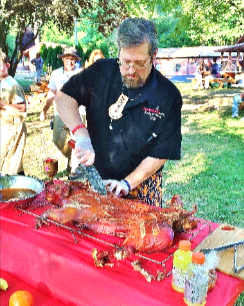
As a third-generation chef, Perry P. Perkins focuses his love of cooking on barbeque, traditional southern fare, and fresh Northwest cuisine.
Perry runs the non-profit organization, MY KITCHEN Outreach Program, which teaches nutrition, shopping, and hands on cooking classes for at risk youth.
His cookbooks include La Caja China Cooking, La Caja China World, La Caja China Party, and the NEW “La Caja China Grill.”
You can follow the rest of Chef Perry’s cooking adventures at ChefPerryPerkins.com
 Loading... Please wait...
Loading... Please wait...
